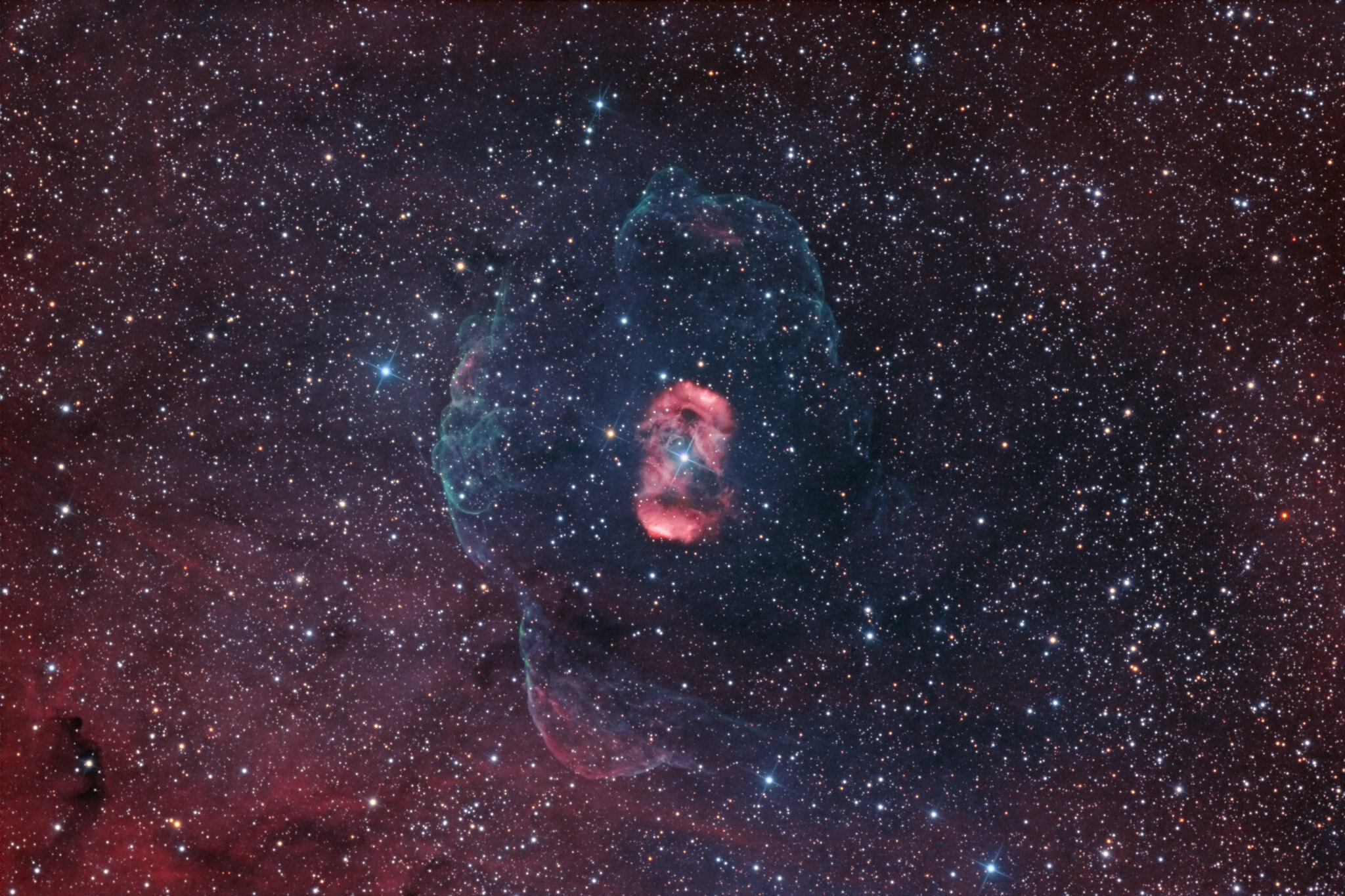
AAPOD2 Image Archives
Sort 2025 By Month: January | February | March | April | May | June | July | August | September | October | November | December
NGC 3576
NGC 3576
NGC 3576 is a bright emission nebula, whose popular nickname is "The Statue of Liberty Nebula" because of the distinctive shape in the middle of the nebula. It is approximately 100 light years across and 9000 light-years away from Earth and is located in the Sagittarius arm of our galaxy and a few thousand light-years away from the Eta Carinae nebula. Within the nebula, episodes of star formation are thought to contribute to the complex and suggestive shapes. Powerful winds from the nebula's embedded, young, massive stars shape the looping filaments. It was discovered by William Herschel on 16 March 1834 and the name was first suggested in 2009 by Dr. Steve Mazlin, a member of Star Shadows Remote Observatory (SSRO).
7 hrs each of SHO filters and 30mins each of RGB filters for stars replacement.
Processed in Pixinsight with a final flourish in Photoshop
Copyright: Vikas Chander
NGC 6164
NGC 6164 has an appearance similar to what you would see in a planetary nebula. It has a gaseous shroud that surrounds the central star. These typically have shock-waves, and often highlight where they brighten showing where they are interacting with the interstellar medium.
The extensive outer halo would have to be my favorite part of this image. The outer halo is very dim and certainly proved to be a challenge to reveal it with all the tiny filaments with blue and teal highlights and a bit of red where Ha is present. There is a feature that I initially believed to be a light leak. On the left side of the image, there is what looks like a straight line. After looking through many images, it’s definitely real, and not a light leak.
NGC 6164 is 4,200 light-years away in the constellation of Ara. It is about 21 X 13 arc mins, at magnitude 11. It contains a very bright O-type star about 40 times as massive as our sun. The nebula in the center spans around 4 light-years and has an interesting bipolar symmetry, this is all framed nicely in the larger outer-shell, all set within a beautiful star-field.
Equipment Details: 10 Inch RCOS fl 9.1
Astro Physics AP-900 Mount
SBIG STL 11000m
FLI Filter Wheel
Astrodon Lum, Red, Green, Blue Filters
Baader Planetarium H-alpha 7nm Narrowband-Filter
Baader Planetarium OIII 8.5nm Narrowband-Filter
Baader Planetarium SII 8.0nm Narrowband-Filter
Exposures Details:
Lum 45X900 Bin 1
Red 15X900 Bin 1
Green 14X900 Bin 1
Blue 12X900 Bin 1
Ha 61X1800
OIII 113X1800
Total Time: 108.75 hours



